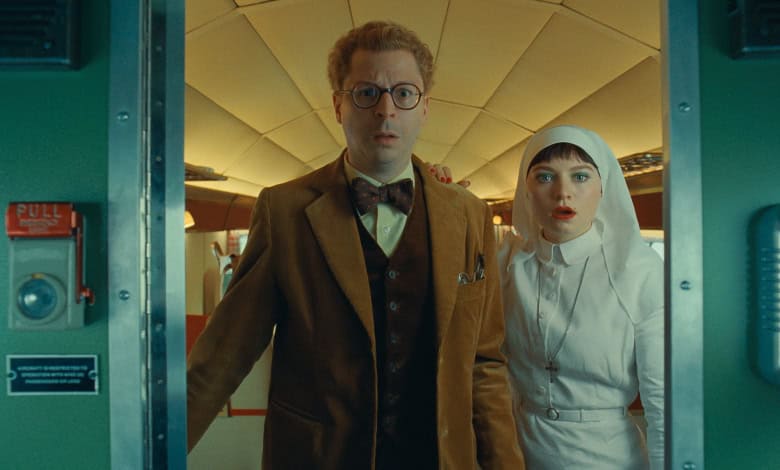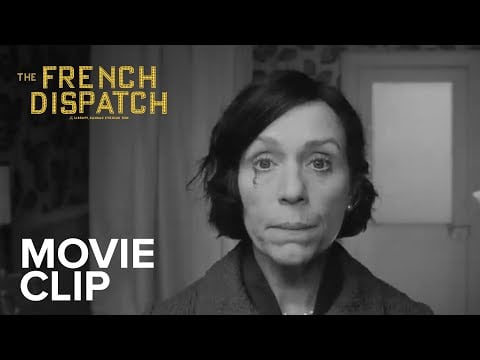Is Wes Anderson Hollywood’s Most Overrated Director?

Wes Anderson is back. And judging by “The Phoenician Scheme’s” trailer, it’s more of the same.
- Pastel frames
- Cutesy fonts
- Bill Murray somewhere in the margins
- High on affect, low on actual substance
It’s another loop of deadpan whimsy, a gorgeous display case, sealed shut.
And people will clap. Again.
Anderson has become cinema’s most overrated auteur. A man who peaked with “Rushmore” (1998) and “The Royal Tenenbaums” (2001) — films that still had blood in their veins — has calcified into a one-man Etsy shop with a camera.
What once hinted at emotional depth is now just production design with a faint pulse. He didn’t sell out. He bought in—fully, obsessively—to his own aesthetic myth.
In recent years, his films have become exercises in compulsive self-reference. Every frame is a Pinterest post, every scene a meticulously arranged still life.
Characters aren’t characters anymore—they’re set dressing with speaking parts. Stories don’t unfold—they curl back in on themselves like ribbon.
And yet the myth persists: this is cinema.
Take 2018’s “Isle of Dogs.”
A stop-motion visual treat so desperate to appear profound that it forgets to be remotely human. The “homage” to Japanese culture amounted to dogs voiced by Bryan Cranston and Edward Norton speaking English, while actual Japanese humans were left untranslated—mere background noise to Anderson’s aesthetic tourism.
There was no urgency, no intimacy, just a diorama pretending to be deep. But critics fawned anyway. Because it had his name on the tin.
Then came “The French Dispatch.” Or rather, a Wes Anderson-branded coffee table book with actors trapped inside.
Wes Anderson’s new film, The French Dispatch (2021) just recieved a 9 Minute… thats right, NINE MINUTE, standing ovation at the Festival De Cannes… WOW, how I wish I was there! pic.twitter.com/Q5ZiJ9ieHl
— Kieran Goodwin (@KieranGoodwin18) July 12, 2021
Three half-baked stories—none of which earn their runtime—stuffed with literary nods and French provincial kitsch. It wasn’t a film. It was a mood board held together by fonts and winks.
Emotionally deficient. Intellectually smug. Did it say anything? No. But it did so with perfectly centered titles and enough typewriter sound effects to fill a Brooklyn bookstore.
And then there’s 2023’s “Asteroid City.” It looked like it was shot in a dollhouse buried in the Nevada desert. It had layers: a play inside a movie inside a cosmic void of meaninglessness.
Aliens showed up. So did grief (and Tom Hanks). But none of it landed. Because it wasn’t meant to.
The whole project felt like “Waiting for Godot” rewritten by someone obsessed with prop placement. Critics called it a “meta-commentary on loss.” Translation: “I didn’t get it either, but I’m scared to say so.”
This is Anderson’s grift: make the same movie over and over again, call it a meditation on storytelling and rely on audiences being too self-conscious to admit they’re bored stiff.
The tragedy here isn’t that these films exist—it’s that they’re rewarded. Anderson, who once gave us fully formed characters with conflicting desires and real heartbreak, now offers paper dolls on a Lazy Susan and gets called a genius for it.
He’s become a stylist with nothing left to say. A craftsman of kitsch. He makes movies that stroke his ego, not the audience’s imagination.
Tilda Swinton. Frances McDormand. Willem Dafoe. Jason Schwartzman. Scarlett Johansson. Ed Norton. All wasted in various Anderson films. All reduced to quirky pawns in his symmetrical dollhouse.
They don’t act; they pose. They are little more than meat-suit mannequins.
And we, the audience, aren’t part of the story anymore. We’re lowly onlookers, forced to watch characters go through the motions like wind-up toys in a display no one’s allowed to disturb.
Let me state the obvious: this isn’t storytelling. Not the good kind, anyway. It’s performance art with a budget. A high-fructose aesthetic hit paraded as profundity.
Anderson isn’t challenging us. He’s coddling himself. Every shot is perfect. Every line is pinned in place. But the result? Nothing. No stakes. No risk. No punch.
It’s cinematic taxidermy.
What’s worse, he’s robbed a generation of young filmmakers of risk. He’s taught them that mood is meaning, that character development is unnecessary, that color-coding and cameo-stuffing are enough.
That cinema is curation, not creation.

It’s not.
Anderson was never Kubrick. He was never Malick. Hell, he’s barely Tim Burton. At least Burton got weird. Anderson just got predictable.
So go ahead. Watch “The Phoenician Scheme,” opening in select theaters May 30, or whatever whimsically-titled patchwork is next. Admire the drapes. Quote the dry lines. Post a screenshot with a pink filter.
Just don’t pretend you were moved. Don’t pretend this is genius. It’s repetition. Beautiful, soulless repetition.
Anderson isn’t making movies anymore. He’s running a theme park.
And the ride hasn’t changed in a decade.
The post Is Wes Anderson Hollywood’s Most Overrated Director? appeared first on Hollywood in Toto.








